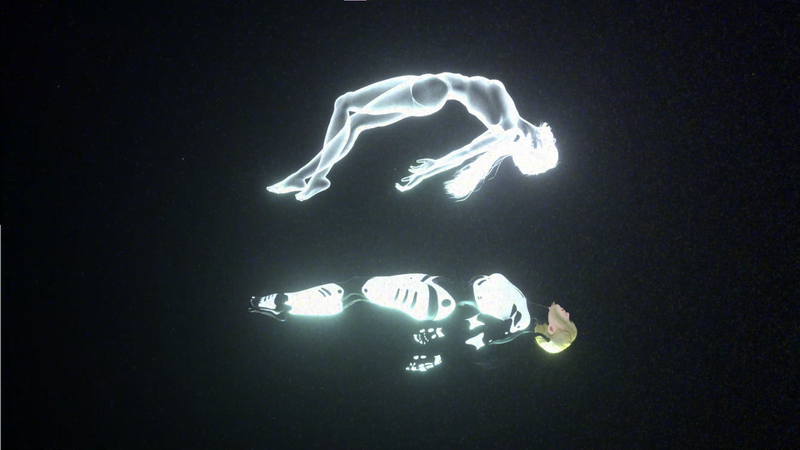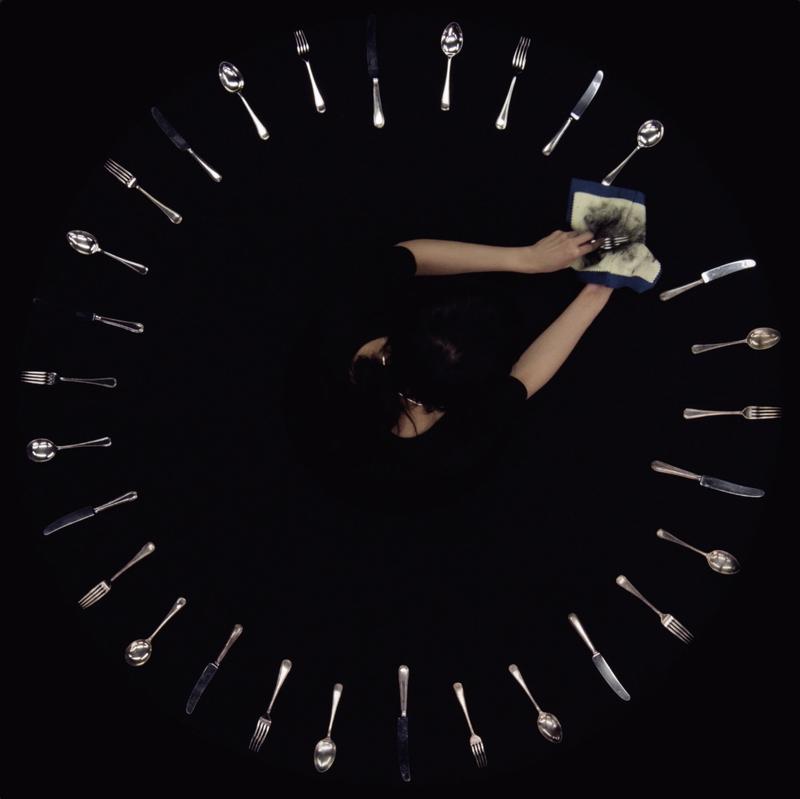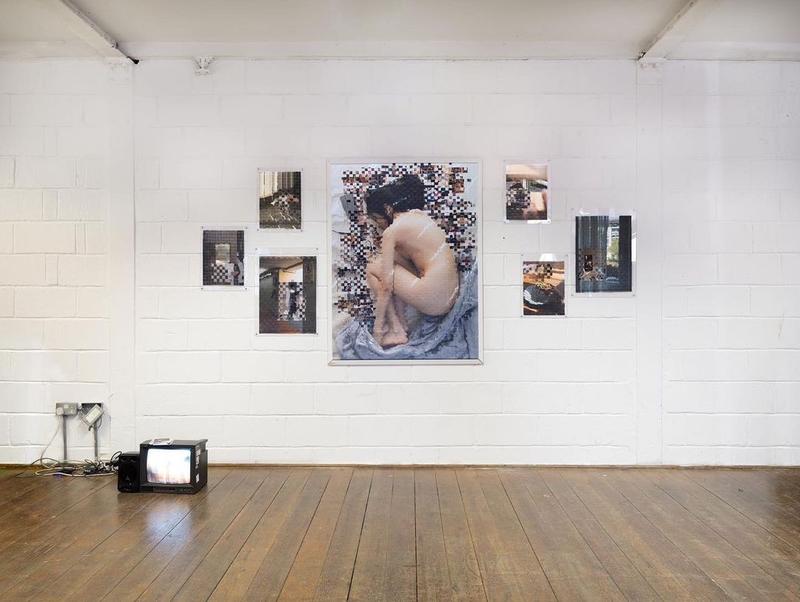Text by Piotr Bockowski

The breeding ground for global industrial society, which forms our techno-womb, the People’s Republic of China inherited a profoundly patriarchal tradition, according to Uchercie, the curator of “ ” Quote Unquote exhibition at London’s Ugly Duck in February 2023. Our surrogate mother of high-tech civilisation seems to be designed and controlled by Chinese old men and no less so represented by Beijing’s Politburo, the communist male member that erects a tough regime of socio-engineering and calculated human farming of men, microbes, femborgs and others.
“ ” Quote Unquote politics. The strictly centralised, top-down system of paternalistic power of the Chinese Communist Party accepts no criticism (not even from their microbial, biotechnological subjects persecuted with paranoid ‘zero-virus policies’), as it enforces ideological hardline in all media and citizens’ organising efforts it pushes individuals towards biopolitics of self-censorship.
This unforgiving management of the population reflects in a subordinate position of women, together with the reproductive functions of their bodies, nowadays reaping mentally the previously sown, infamous one-child policy (1980-2015, followed by two child policy 2015-2021 and three child policy 2021) that often led to culling of female infants in favour of giving birth to boys (an excess that led to an adjustment of one child policy in 1984 by allowing a second child if the first was female, what indirectly confirms the higher consideration for male offspring).
Allegedly, a lingering sentiment perpetuates to this day, as illustrated by Uchercie’s curatorial reference to two cases of extreme violence against women (and marginalised people) in China that triggered 2022 vital discussions about the deficiency of women’s rights as well as lethal consequences of covid lockdowns, pertaining to eugenics.
In the first case of a systematic assault on fem-bodies, at the beginning of the last year, a viral video on Chinese Internet showed a woman with deteriorated body condition chained by her husband to a wall in a filthy shed. She later became known as ‘mother of 8 children from Xuzhou’. She became a monstrous spectacle of an immobilised breeding apparatus, considered subhuman due to “mental illness”. Her husband was initially excused by the authorities as a ‘legitimate owner’ taking care of an ill relative, only to further discredit the woman as ‘a dangerous beggar’ who was restrained in order to prevent her from hurting others.



Right: Untitled (Rituals), Kai Yan Cheung
Whereas later, it was established that she was a victim of multiple human trafficking and most likely repeated rape, although many investigators have been silenced, including two female volunteers reportedly detained. Last but not least, children of ‘the mother of 8’ could have been subjected to female infanticide (ancient Chinese tradition of killing female infants, performed historically by throwing them into rivers as the most common method, but also by dumping them onto rubbish piles, suffocation, starvation, exposure to elements while placed in baskets on trees or abandoned inside specially designed for that purpose “baby towers” of Buddhist nunneries), since seven out of her eight children were boys.
In the second case, later last year, a young woman was sexually attacked by a middle-aged man in a restaurant in Tangshan. Her attempt of self-defence involved another nine men attacking her (and injuring three other young women companions) by dragging her by hair outside of the building, kicking and punching mostly of the head area, together with several glass bottles smashed on her head. Ominously, it is said that none of the male visitors of the restaurant attempted to help the women, which was later publicly pointed out by an actress, who then was officially criticised for promoting gender antagonism, alongside a ban for inciting gender antagonism of 265 users of the most popular Chinese social media platforms, including Weibo (Twitter-like microblogging), Douyin (counterpart of TikTok inside China) and Kuaishou (a short video-sharing mobile app).
Two above-mentioned incidents of the last year in China were the immediate trigger for “ ” Quote Unquote curatorial project by Uchercie1, who gathered 16 mostly female Chinese artists in London with an aim to challenge the patriarchal narratives of China. A blank quote, or rather a removal of a quote (unquote), is a silent shout expressing an excessive self-censorship of female voices imprinted by the authoritative system of patriarchal society.

“ ” Quote Unquote pieces. Dehumanised by ideology, often employing new media technologies as coping mechanisms, Chinese female artists are likely to assume the position of Haraway’s cyborg – a post-human hybrid entity that transgresses the limitations of mare male humanism. Femborg’s critical perspective allows us to access life processes beyond human scales and pursue critique of civilisation via dimensions of deep ecology. During “ ” Quote Unquote, artistic commentary on Anthropocene uses the issue of human’s impact on the planet’s ecosystem as a figuration of patriarchal governance of women.
A hypnotic array of visions of alienating numbness, internalised repressions, environmental extinctions or dismembered physiologies during “ ” Quote Unquote echoed femborg ecosophies excluded from Chinese society.
Portia Yuran Li’s sculpture Tide, Agnoscioso, Heave, Redemption assumed silver-coated remains of discarded sea creatures, calmly illustrating abuse reproductive machines of hollow female bodies, transformed by the sculptress into horseshoes crabs shells abandoned after blood extraction. Seafood trauma continues in Misery of an Abstract Dinner, a short video by Raw22, which portrays a cyborg girl who is an empty CGI shell, an artificial vessel of alienation within a humanoid form. As she levitates over her exoskeleton during a dinner accompanied by her prosthetic doubles, she dreamily craves to consume the lookalike shells of her cyber-crustacean incarnation.
Becoming of non-human life forms is also explored by Moyu Yang’s video performance Star Centroid, which shows a movement choreography that mixes human and non-human camera perspectives with an aim to eradicate the human figure as the central point of reference and in favour of environmental holism. Living bodies are defined by changing relations of biological flux. Video-recorded dance is inspired by Taoist philosophy of ‘mapping the river’ (Hetu Luoshu) that approaches nature as essentially undefinable. Its navigation happens only through submission to streams of floating. The metaphor of ‘mapping the river’ suggests unavoidable limitations to human calculation (of technology, civilisation, political control), confronted with fluxes of elements.
In Sarcophagi Vivum Aero installation by Celeste Viv Ly is directly drawn to the primordial liquid entity of life. Her vessel of bubbly mineralisation offers watery media of womb/cocoon and whispers of mineral prehistories and gush of earthly fertility. Shape like a bathtub with the feel of a sensory deprivation tank, Celeste’s liquid sarcophagus opens a portal to collective catacombs of oceanic depths. There was an icicle of frozen seawater transported by her from an undisclosed, ‘nonexistent’ location. Suspended and slowly dripping into the sarcophagus throughout the duration of the exhibition, defrosted seawater alludes to torturous phantasies of cryonics.


Deeper still into imaginary pastimes and impossible futures, Zhu Qia’s animation Subordination and Inclusion is led by a female-thing protagonist and develops through changes in her non-human body forms. She eventually becomes a human after a thousand years of an intentional process of tedious incubation that later changes her into a different beast or vegetation. She lives through non-concrete transmutations of deep time.
The projection is accompanied by Zhikang Cai’s installation Divide, Distance, Disappear, which experimentally translates a social system into thermodynamics and probes the limits of human (vocal) communications by analogy to differences in material consistency. Visitors of the installations are invited to speak via tubes submerged in water and explore a choked longing for an underwater society of drawn foetuses that, likely rejected by humans, evolved into something else.
Botched evolutions and geological disasters are re-invented against societal repressions. Uchercie’s painting Somnambulists pictures two humanoid figures escaping a deserted landscape of blurry heat, what can be interpreted as post-apocalyptic dislocation on burned earth, heading for solar death. In a more calculated form and with different conceptual imagination, Zhikang Cai’s installation Silent Declaration also narrates the violent planetary forces but more indirectly, as it emphasises the role of technology in imposing order on the megalithic form(less) geo-movements.
Picturing the aftermath of a fantasy cataclysm, Xicheng Lu’s installation The Living Room constructs a living environment from imaginary fossils and industrially designed skeletons used as fake luxury materials. Her sculptural marks of a haunting footprint of digital life correspond to the image series Liquid Confluent by Yige Tong. They portray the liquidity of female hips as a wet-tech environment for bodily engagement with electronic media. Her digital weaving technique of the images (printed from the Internet) wants to provide for integration of intimacy of online matriarchy.
Eventually, “ ” Quote Unquote more directly addresses politics with two spectacular pieces. Hour-long Untitled (Rituals) live performance by Kai Yan Chueng positions her inside a hole at the centre of a round table. As she turns around, she dutifully polishes cutlery pieces one by one in a seemingly endless cycle. Oxidation of silver forks and spoons makes her task of removing the tarnish unattainable, which addresses vicious circles of female domestic oppression and silent servitude to social conventions.
Another political metaphor comes from Zeus Li’s installation Utopia of Problematic, which consists of a few hundred knives with blades erected upwards from the ground and covered by an Oriental carpet. It clearly presents a gesture of superficial concealment, locating acute danger behind the mystification of exoticism or hiding a problem that cannot be addressed under a surface appearance. The ornamental composition of centralised arrangement wants to excuse certain underlying cruelty towards anonymous masses, composed of deeply penetrating, internalised violence.





